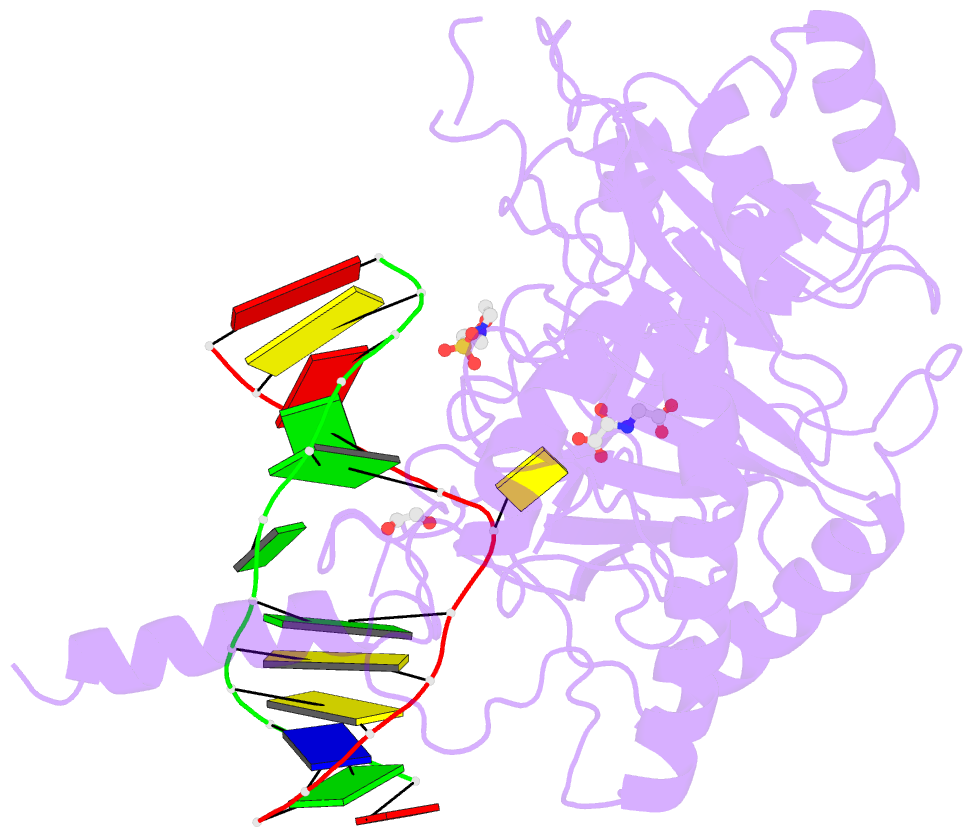Summary information and primary citation
- PDB-id
- 7ne6; SNAP-derived features in text and JSON formats;
DNAproDB
- Class
- oxidoreductase
- Method
- X-ray (2.3 Å)
- Summary
- Human tet2 in complex with unfavourable DNA substrate.
- Reference
- Ravichandran M, Rafalski D, Davies CI, Ortega-Recalde O, Nan X, Glanfield CR, Kotter A, Misztal K, Wang AH, Wojciechowski M, Razew M, Mayyas IM, Kardailsky O, Schwartz U, Zembrzycki K, Morison IM, Helm M, Weichenhan D, Jurkowska RZ, Krueger F, Plass C, Zacharias M, Bochtler M, Hore TA, Jurkowski TP (2022): "Pronounced sequence specificity of the TET enzyme catalytic domain guides its cellular function." Sci Adv, 8, eabm2427. doi: 10.1126/sciadv.abm2427.
- Abstract
- TET (ten-eleven translocation) enzymes catalyze the oxidation of 5-methylcytosine bases in DNA, thus driving active and passive DNA demethylation. Here, we report that the catalytic domain of mammalian TET enzymes favor CGs embedded within basic helix-loop-helix and basic leucine zipper domain transcription factor-binding sites, with up to 250-fold preference in vitro. Crystal structures and molecular dynamics calculations show that sequence preference is caused by intrasubstrate interactions and CG flanking sequence indirectly affecting enzyme conformation. TET sequence preferences are physiologically relevant as they explain the rates of DNA demethylation in TET-rescue experiments in culture and in vivo within the zygote and germ line. Most and least favorable TET motifs represent DNA sites that are bound by methylation-sensitive immediate-early transcription factors and octamer-binding transcription factor 4 (OCT4), respectively, illuminating TET function in transcriptional responses and pluripotency support.





